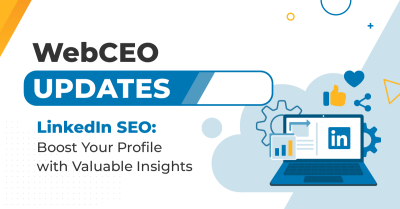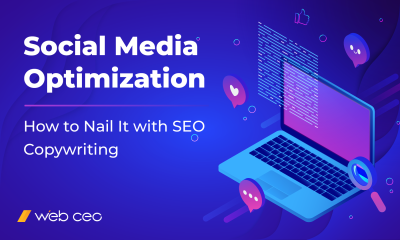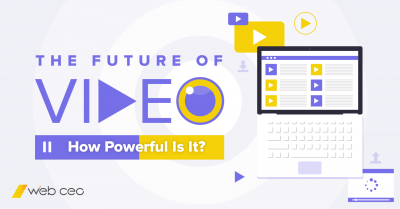
Companies these days tend to have their own page on at least one social network. Many SEOs recommend being active on social media as much as possible: it’s said to boost your website’s position in SERPs. Despite that, the status of social media activity as a ranking factor remains a controversial topic. Does being active in social media help you rank in Google or not? Contradicting statements on the subject from Matt Cutts only served to add fuel to the fire and distressed SEOs who had poured their resources into social media campaigns.
We do use Twitter and Facebook links and ranking, as we always have, in our web search rankings. – Cutts, 2010
…As far as doing special, specific work to sort of say, “you have this many followers on Twitter or this many likes on Facebook”, to the best of my knowledge, we don’t currently have any signals like that in our web search ranking algorithms. – Cutts again, 2014
I haven’t experienced trust issues of this magnitude since the day I opened Grandma’s box of cookies (you know the one) and actually found cookies inside.
Why is this a topic for debate? Because almost everything we know about SEO came from researching what works and what doesn’t. We would’ve given up on social media long ago if we were convinced there wasn’t any point in sticking with it. Whether or not it deserves to be called off-page optimization, the positive influence of social media activity on websites is a certain known.
8 SEO-Improving Perks of Using Social Media
1. New pages on your site get indexed faster
A newly created page needs to be added to Google’s index before it can appear in search results. In order to be indexed, there has to be at least one link pointing to it – and if it’s in a place that’s often crawled by Google’s spiders, all the better. Among such places are… you guessed it: social networks.
The simplest example is a blog. If your website has a blog, you absolutely should share links to your new posts in social media (like we do). They’ll get crawled in a matter of minutes, which is nice in itself… but the list of benefits is just beginning.
2. Social sharing gets you more backlinks
Dofollow backlinks are the bricks that build the temple of your presence in the Web. Or a small shed, if you don’t have enough. Outbound links on social networks are usually nofollow links and don’t hold the same power. But Google favors sites that have both dofollow and nofollow links in their link profiles, as opposed to sites with few nofollow links. The latter are often suspected to be involved in machinations and may earn a penalty.
You can use WebCEO’s Backlink Checker to monitor and analyze the quality and quantity of backlinks to your site, contributing to a balanced and effective link-building strategy.
3. Social media buzz drives you more website traffic
This is a logical consequence of the above point. More links naturally mean more traffic. How much extra traffic you receive depends entirely on your pages’ popularity: the more subscribers, the more visitors and potential customers that will buy from you. It’s definitely worth investing your time in helping your pages grow!
4. Your website gets more exposure via sharing
The Internet is all about sharing content with others. It’s easier on social networks than anywhere else. If the content you post on your page is good and interesting, your visitors are likely to share it. Then ”their” visitors will learn you exist.
Word spreads and your brand gets recognized, increasing your chances against your competitors. Google will see your site’s traffic rise and they may be counting that as a ranking factor now. Which leads us to the next point…
5. Customers can find you there
Social networks have plenty in common with search engines like Google, they pretty much are search engines themselves because people conduct searches for specific keywords within them. Social networks are just better fit for socializing than regular search engines. That’s what makes them so popular. Because people spend several hours a day on social media, they are more likely to find your company’s page there than in Google. Make it easier for them to find you – by getting subscribed and shared or via PPC ads, including retargeting campaigns. Then it’s only a matter of whether you can convert your visitors into clients.
6. You can easily follow the latest trends
If you know what your customer wants, your marketing campaign is already on its way to a bright future. What better place to learn more about your audience’s interests than a platform where they openly discuss the latest trending topics? That’s how you can create and post content they’ll find enjoyable, both in social media and on your actual site. To create high-quality content that is optimized for both your customers and search engines, you can try WebCEO’s Content Assistant Tool, designed to help you strike the perfect balance between engaging and search-friendly content.
7. Google ranks social network profiles too
When you optimize your site and it shows up in top positions in SERPs, that’s great. When you don’t and your brand still shows up in top positions, that’s even better. A social media page that’s well-optimized for specific keywords is as likely to appear in SERPs as any other web page out there.
8. It’s easy to receive feedback from your audience
Social networks are all about being, well, social. You can ask your customers to leave reviews and testimonials on your site, but it’s so much easier to ask your audience for feedback in comments on your social media page. Ask, and you shall receive; sometimes you shall receive without even asking if your followers are impressed by you. Be sure to impress them in a good way.
8 Tips to Use Social Media Effectively
1. Be where your audience is
Choosing the wrong place to advertise yourself is like fishing in an empty pond: you’ll waste your time and starve. Research a social network’s demographics before making your decision to post there. For example, the majority of Instagram users are female. Are you selling a female-oriented product? Then you should consider Instagram as your main battleground.
2. Post regularly
The more content you produce, the more awe-inducing and engaging it is, the happier your followers will be. Especially if you do it often. It’s best not to keep them waiting too long: excitement tends to die down quickly, and then your audience forgets why it loved you at all. Besides, don’t you want them to know what you’re up to? Some of your visitors are your prospecting customers, they just don’t know it yet.
Keep them entertained and ready to become your clients. Strike the iron while it’s hot!
3. Emphasize on the visual
An old and verified truth: visual information is powerful. It leaves a much deeper impression on a viewer than raw text and is processed easier. Since your job is to promote your brand, you have to employ visual media – images and videos – and use them to impress.
A picture is worth a thousand words; a video is worth that and a thousand more. Consider putting your effort into making cool, unique, shareable visual content. It will make you so much more distinguished and memorable.
4. Make your text posts short
In social media, less is more. Twitter in particular is notorious for its limit of 140 characters per post. Information, when distributed in small portions, is easier to swallow and digest than a wall of text made of overly long paragraphs. Make your text posts just long enough to motivate the user to visit your site and do something there.
5. Write and reply to your customers
If I had to name a difference between social media messages and emails, I’d say it’s the environment. Social networks feel friendlier and more relaxing, with a stronger sensation of chatting with a real person. Can you relate? Of course you can. When both sides feel comfortable, the task of winning the audience over feels much more enjoyable. As they say, do what you love, and you’ll never have to work a day in your life.
6. Tag other businesses and share their pictures
Actively linking to other sites on your own is one of several ways to gain backlinks. The same is true in social media.
Tags and linked mentions of other companies in your posts cannot go unnoticed; the beneficiaries are likely to return the favor in the future and mention you in their own content, giving your brand more exposure. On top of that, bringing up a popular competing brand’s name in some of your posts can help people make an association between your two companies as part of a defined niche. Google values webpages and posts that mention various websites as part of a category.
7. Recycle expired content
It’s difficult to publish the same text twice on your own site without risking trouble with duplicate content. Fortunately, your pages in social media are exempt from this thorny issue. You can recycle old posts with virtually zero risk, except for annoying your audience if you abuse this. Do it right, and you can breathe new life into a piece of content that made you profits in the past (for example, one tied to a seasonal event like Christmas).
8. Optimize your social media activity for Bing
How many of you saw this coming? Not many, I bet. However, Bing has a healthy relationship with social media – more so even than Google the search giant, and gets a special mention.
In 2010, Bing made a statement about social signals being a ranking factor. But unlike Google, Bing has never retracted it. Without an overturning statement, it makes sense to assume it’s still true and use it as a basis for your social media campaign.
As one of Google’s main competitors, Bing has been gaining momentum lately. Don’t be quick to disregard it; rather, include it in your plans. Should Bing get big while riding the social tide, Google might get worried and review their stance on social media signals. And then you’ll be glad you’ve built a strong online presence.


